I am writing a Eye On Hand Calibration Program.
To do that, I am moving the camera mounted on the robot arm to 20 different positions, looking at a single aruco marker.
The translation vector is very stable, but the rotation axes flicker, introducing an error into the resulting calibration matrix.
Therefore, I would like to average X number of frames' rotation vectors (The aruco library does return rotation vectors and translation vectors separately).
Here is the important part of the code
cv::aruco::detectMarkers(image, dictionary, markerCorners, markerIds, parameters, rejectedCandidates);
outputImage = image.clone();
cv::aruco::drawDetectedMarkers(outputImage, markerCorners, markerIds);
cv::aruco::estimatePoseSingleMarkers(markerCorners, 0.05, camMatrix, distCoeffs, rvecs, tvecs);
rvecs is actualy a vector of rotation vectors, with only one member because there is only one aruco marker.
If a marker is found in the frame then,
if (rvecs.size() == 1) { // There is one marker good frame
framesFound++;
for (int i = 0; i < 3; i++) {
avgRvecs[i] =+ rvecs[0][i];
avgTvecs[i] =+ tvecs[0][i];
}
}
And after all the desired frames to average have been processed,
if (framesFound == 0 ) { // No frames with markers...
} else {
for (int i = 0; i < 3; i++) {
avgRvecs[i] = avgRvecs[i] / framesFound;
avgTvecs[i] = avgTvecs[i] / framesFound;
}
cv::drawFrameAxes(outputImage, camMatrix, distCoeffs, avgRvecs, avgTvecs, 0.1);
With a single frame I get
With 10 averaged frames I get

